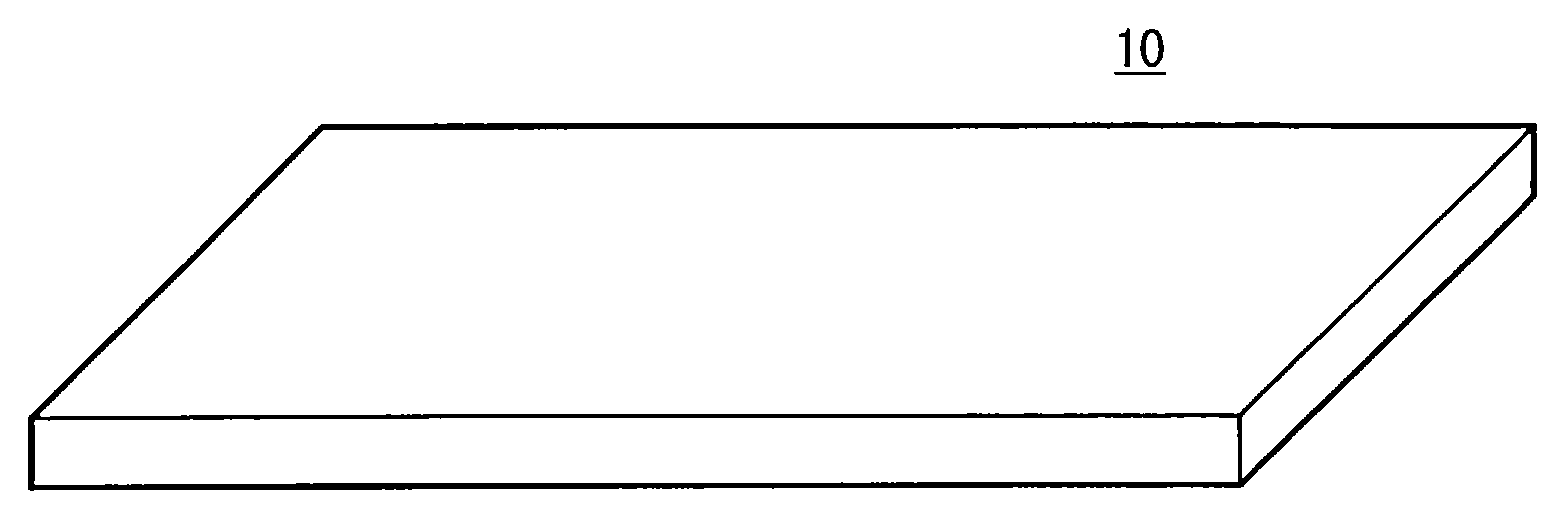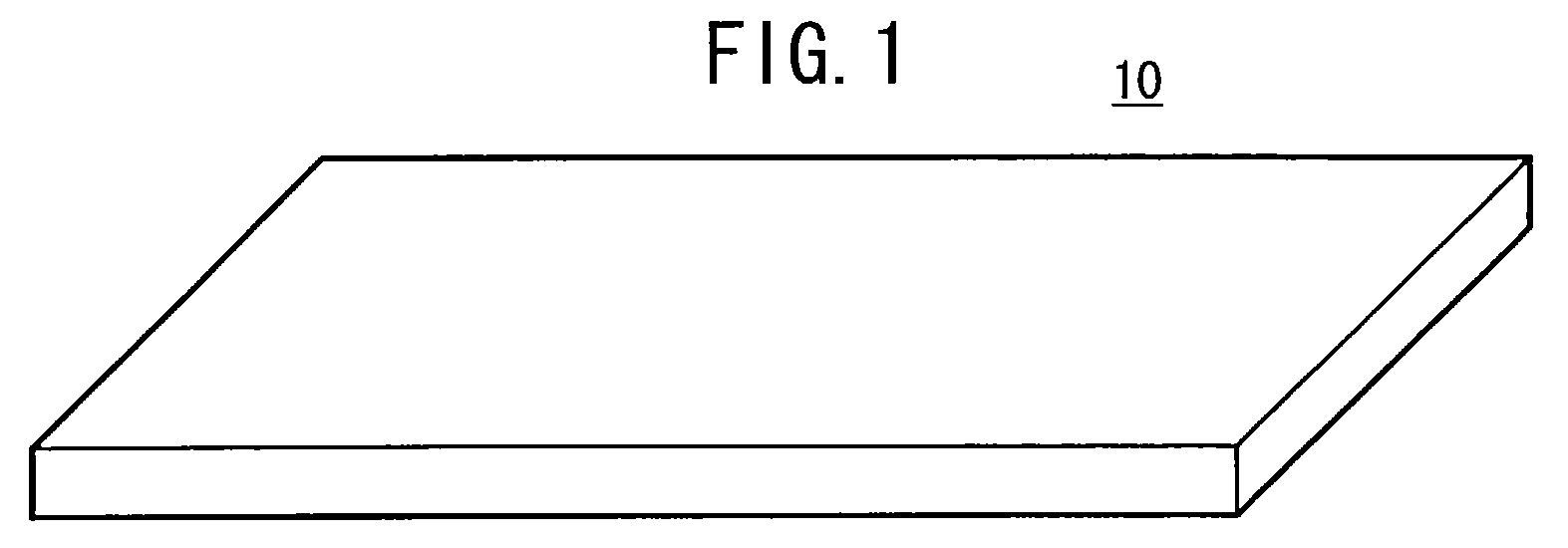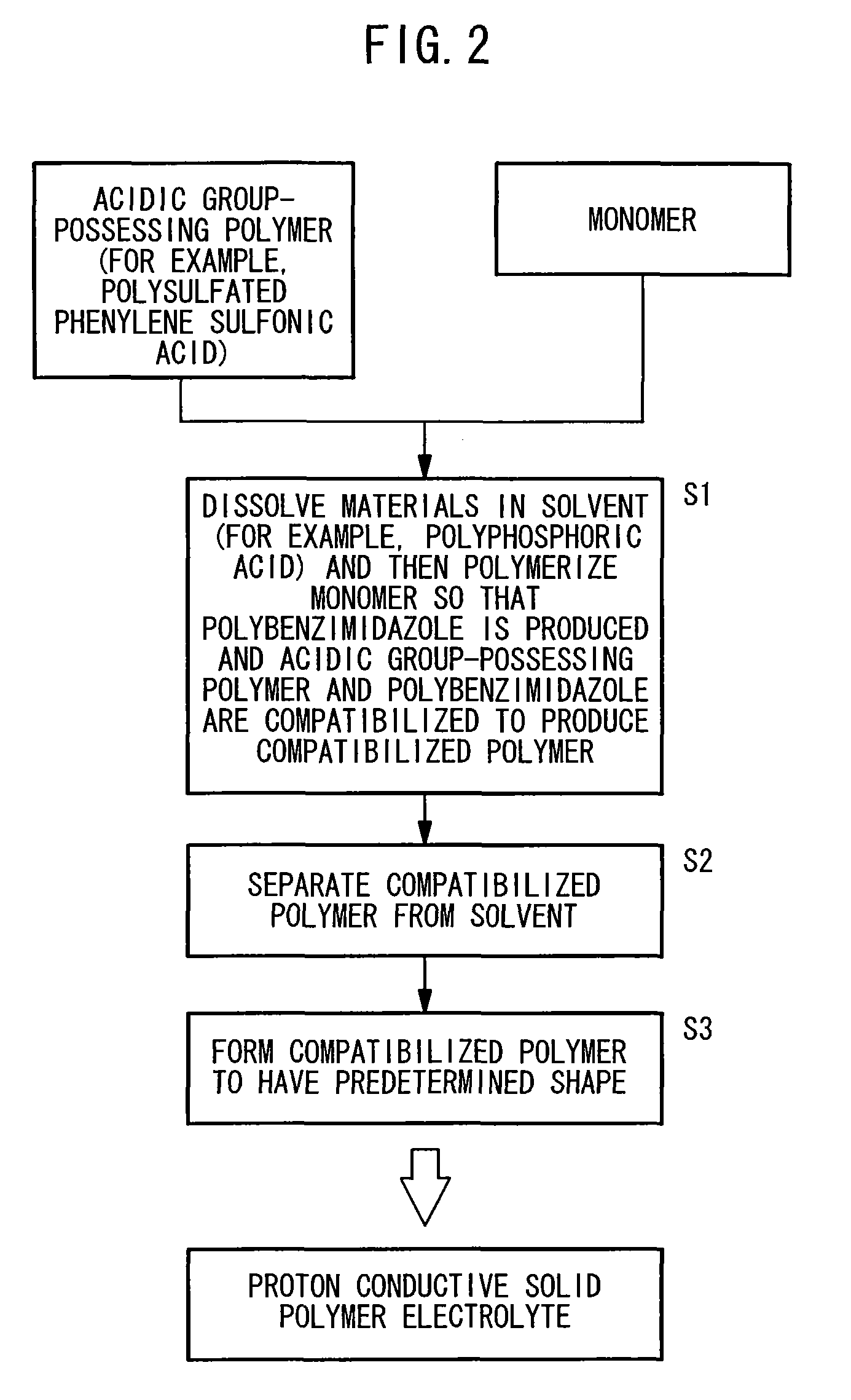Proton conductive solid polymer electrolyte and method for producing the same
- Summary
- Abstract
- Description
- Claims
- Application Information
AI Technical Summary
Benefits of technology
Problems solved by technology
Method used
Image
Examples
example 1
Synthesis of Polysulfated Phenylene Sulfonic Acid (Acidic Group-possessing Polymer)
[0090]The processes, which followed the procedures represented by the following chemical reaction formulas, were performed exactly in accordance with a certain sequence, and thus polysulfated phenylene sulfonic acid as the acidic group-possessing polymer was prepared.
[0091]
[0092]At first, 15 g of methyl phenyl sulfoxide was dissolved in 13.3 g of thianisole in an argon atmosphere. 214 ml of methanesulfonic acid-was dropped to an obtained solution while cooling the solution to perform the reaction for 20 hours at room temperature.
[0093]This solution was mixed with 214 ml of perchloric acid having a concentration 60%, followed by being agitated for 1 hour. When 100 ml of deionized water and 100 ml of methylene chloride were added thereto, the mixture was separated into an aqueous layer and an organic layer. Of these layers, the aqueous layer was extracted with methylene chloride, and then the extracted ...
example 2
Preparation of Membrane Compatibilized Polymer
[0100]Commercially available polyphosphoric acid having a concentration of 116% as calculated by conversion into phosphoric acid was retained at 120° C. in an Ar atmosphere, to which 1.20 g of 3,3-diaminobenzidine tetrahydrochloride was added. As a result, hydrochloric acid was produced. After completion of the production of hydrochloric acid, 2.60 g of polysulfated phenylene sulfonic acid obtained in Example 1 was added, followed-by being agitated for 8 hours to dissolve polysulfated phenylene sulfonic acid in polyphosphoric acid. In this procedure, it was confirmed that the viscosity of the solution was raised as time elapsed.
[0101]The temperature of the solution was raised to 160° C., and 0.50 g of isophthalic acid as a polymerizing agent for 3,3-diaminobenzidine was added to perform a polymerization reaction for 8 hours at 160° to 180° C. After being left to cool, the solution was poured into a large amount of deionized water to soli...
example 3
Evaluation of Elution Resistance of Acidic Group-possessing Polymers
[0108]The respective disk-shaped thin membrane of Samples 1 and 2 and Comparative Sample were immersed in deionized water, followed by being left to stand for 24 hours at room temperature. After that, titration was performed with an aqueous sodium hydroxide solution to determine the quantity of the mole number of acidic group eluted into the deionized water thereby. The change in amount of the acidic group before and after the immersion was calculated to determine the ratio (retention rate) of the acidic group-possessing polymer retained by the disk-shaped thin membrane assuming that the ratio of the acidic group-possessing polymer of the disk-shaped thin membrane before the immersion was 100.
[0109]Results are shown in FIG. 3. According to FIG. 3, it is clear that the retention rate is remarkably high in the disk-shaped thin membranes of Samples 1 and 2 as compared with the disk-shaped thin membrane of Comparative S...
PUM
| Property | Measurement | Unit |
|---|---|---|
| Electrical conductor | aaaaa | aaaaa |
| Interaction | aaaaa | aaaaa |
Abstract
Description
Claims
Application Information
 Login to View More
Login to View More - R&D
- Intellectual Property
- Life Sciences
- Materials
- Tech Scout
- Unparalleled Data Quality
- Higher Quality Content
- 60% Fewer Hallucinations
Browse by: Latest US Patents, China's latest patents, Technical Efficacy Thesaurus, Application Domain, Technology Topic, Popular Technical Reports.
© 2025 PatSnap. All rights reserved.Legal|Privacy policy|Modern Slavery Act Transparency Statement|Sitemap|About US| Contact US: help@patsnap.com



